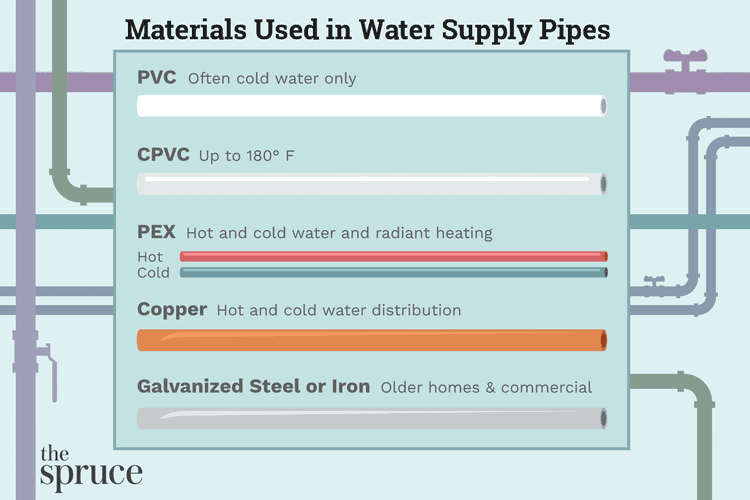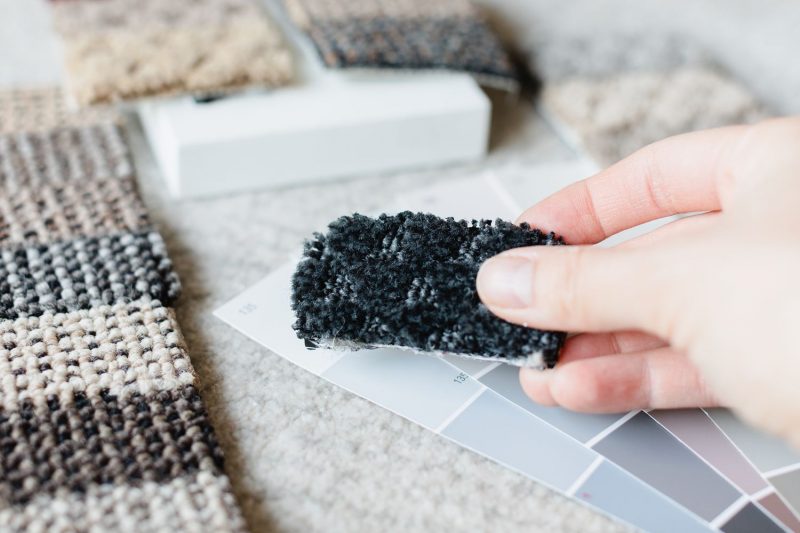If you want the appearance of solid hardwood without the hefty price tag, it’s worth examining the differences between laminate flooring and engineered wood flooring. Both of these flooring types share some characteristics, yet they also have distinct differences in terms of price, water resistance, durability, and installation ease. They were both created as cost-effective and adaptable substitutes for traditional solid hardwood flooring.
Engineered hardwood shares a similar base with laminate flooringhowever, it features an extra layer of genuine hardwood on top, providing the authentic appearance of wood.
Laminate and engineered wood each come with their own advantages and disadvantages, and it’s important to consider these factors to choose the best option for your home and environment.
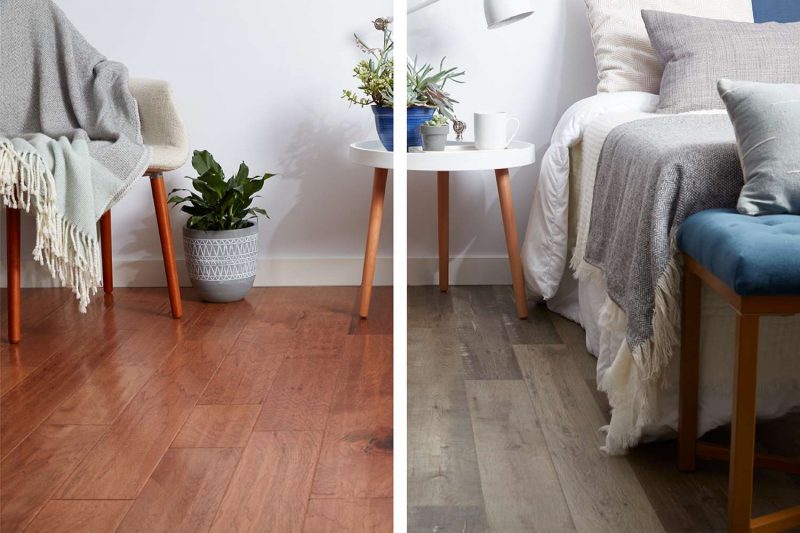
Comparing Solid Hardwood and Engineered Hardwood Flooring
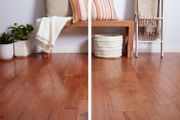
Contents
What is Engineered Wood Flooring?
Engineered hardwood flooring resembles authentic hardwood, featuring a veneer of real hardwood atop a base of premium plywood. Unlike solid hardwood, which is made entirely of wood, engineered wood floors consist of a thinner layer of genuine hardwood adhered to a plywood substrate. This construction provides enhanced dimensional stability, making it a preferable option in some situations compared to solid hardwood. Installation of engineered hardwood can be done by nailing or gluing it down, and it generally has a lifespan of up to 30 years. While it is not waterproof and behaves like wood in that regard, it can be refinished at least once during its lifespan.
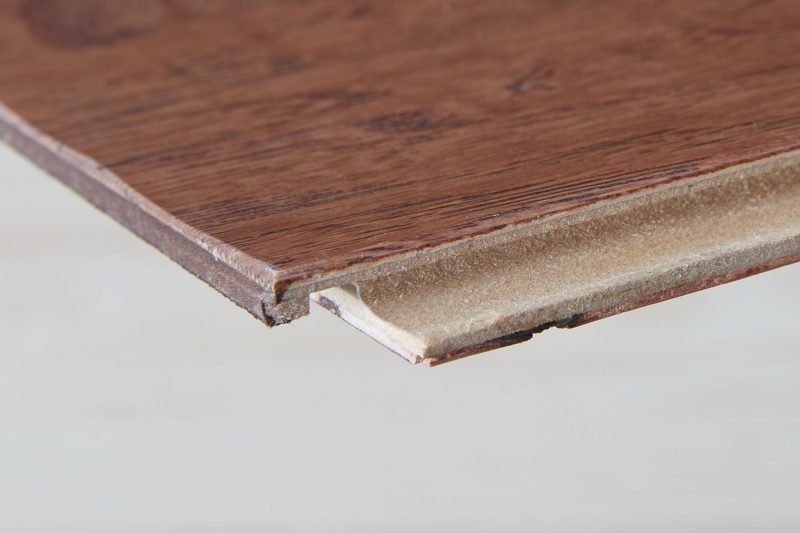
What exactly is laminate?
Laminate flooring is an entirely synthetic product made up of multiple layers. The foundation is constructed from fiberboard, topped with a layer featuring a photographic image. A clear wear layer is then added to safeguard the surface. The image layer can be designed to mimic a variety of materials, with many options aiming to replicate the appearance of wood, while others mimic stone. In recent years, advancements have enabled the surface to be embossed and textured, enhancing the realism of the flooring. From a distance, laminate wood floors can appear quite authentic, but upon closer examination, their artificial nature is usually noticeable to most observers.
Keep in mind that laminate floors cannot be refinished or repaired in a general sense.
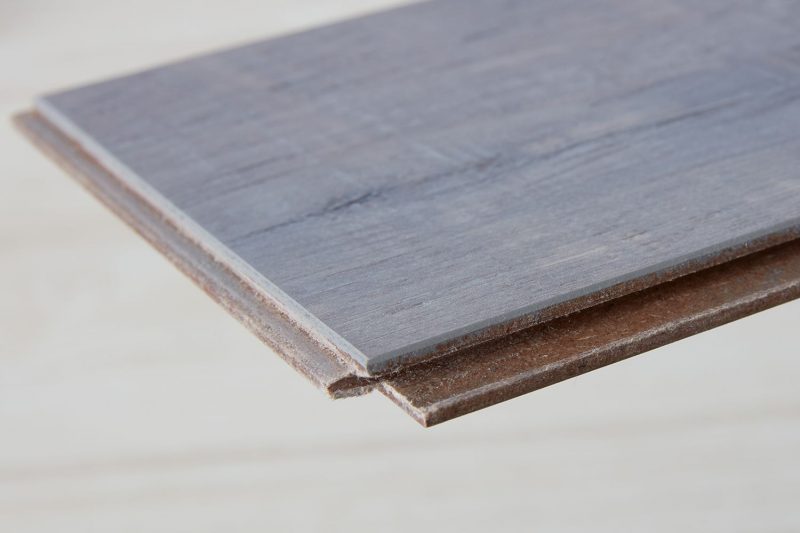
Advantages and Disadvantages
Engineered Wood Flooring
Pros
- Resembles genuine hardwood perfectly.
- Can be polished and restored at least one time.
- Offered in a diverse selection of finishes.
- Endures for as long as 30 years.
Cons
- Prone to damage and deterioration, similar to genuine hardwood.
- Prone to scratches.
- Could be harmed by contact with water.
- Not considerably cheaper than hardwood.
Laminate Floor Covering
Pros
- Affordable
- Resistant to scratches and durable against wear and tear.
- Remarkably resilient
Cons
- Cannot be restored.
- Has a lifespan of just 10 to 20 years.
- Has a distinct texture and appearance compared to hardwood floors.
Essential Distinctions Between Engineered Hardwood and Laminate Flooring
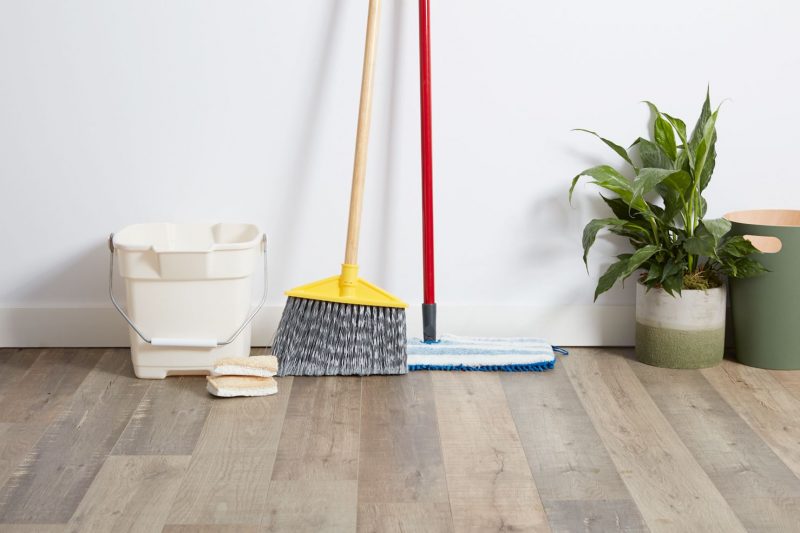
Upkeep and Attention
Among the two types of flooring, laminate flooring is generally simpler to maintain, as its top layer is made of plastic, allowing for easy cleaning. On the other hand, engineered hardwood is also easy to clean, but it is important to ensure it is dried completely afterward.
Ideal for Upkeep and Care: Laminate flooring is somewhat simpler to maintain, as it is more resistant to water damage, although it can still experience problems if it comes into contact with moisture.
Resale Worth
While laminate flooring can occasionally affect a home’s value, high-quality laminate is not necessarily a disadvantage when selling a property. In fact, it can enhance resale value in a lower to mid-range home more effectively than carpet or vinyl. However, it will always be considered less desirable than any type of real wood flooring.
In general, hardwood provides the highest resale value for a property, making it reasonable to conclude that engineered hardwood would be more appealing to prospective buyers compared to laminate.
Optimal for Resale Value: Engineered Hardwood: Many potential buyers tend to view engineered hardwood flooring as significantly better than laminate flooring.
Lifespan
Laminate flooring typically has a lifespan of 10 to 20 years, influenced by the quality of the material and the level of wear it endures. In contrast, engineered wood flooring offers greater durability, often lasting 30 years or even longer.
Optimal Choice for Longevity: Engineered Timber
Engineered wood flooring offers a significant advantage over laminate flooring in terms of longevity, boasting a lifespan of 30 years or more, along with the option to be sanded and refinished.
Sizes
Laminate flooring boards typically measure between 3 and 7 inches in width and are approximately 48 inches in length. In contrast, engineered flooring boards can vary in width from 2 1/4 inches to 7 inches, with lengths typically falling between 36 and 48 inches. Certain engineered wood flooring designs are intended to be installed with boards of varying widths.
Optimal for Dimensions: Tie: The sizes of these items are similar.
Comfort and Audio
Engineered wood and laminate flooring both provide a pleasant feel underfoot. However, laminate flooring is often installed as a floating system, which can lead to some flexing, particularly if the subfloor is not entirely even. Additionally, some homeowners may notice that the sound of heels and pet claws can be bothersome on the laminate’s plastic surface. On the upside, laminate flooring tends to be a softer option, as it is generally laid over a foam underlayment.
Engineered hardwood features a greater thickness and is generally secured by nailing or gluing, which eliminates issues related to flexing. However, it may feel somewhat firmer to walk on, as it is typically not paired with the foam underlayment commonly used with laminate flooring.
Optimal for Comfort and Acoustics: Tie: Both types of flooring offer comparable benefits, and the preference largely hinges on your perspective regarding their performance traits.
Neither type of flooring has a clear edgeit ultimately depends on your perspective regarding their performance traits.
Which is superior: engineered hardwood or laminate flooring?
If you’re aiming for the authentic appearance of a wooden floor, engineered hardwood is the ideal option. However, if you prioritize easy installation and affordability over aesthetics, laminate flooring is a suitable alternative.
Leading Brands
Numerous flooring companies produce both engineered wood and laminate flooring options.
- For many years, Bruce was a subsidiary of the flooring powerhouse Armstrong, but its wood flooring division was recently acquired by American Industrial Partners (AIP). Bruce offers a solid range of mid-range, budget-friendly laminate and engineered hardwood flooring options. Their products are primarily available at large home improvement retailers.
- Shaw Industries, a subsidiary of Berkshire Hathaway, the firm led by Warren Buffet, is a major player in the flooring industry, offering a wide range of flooring options such as laminate, engineered hardwood, and solid hardwood. Their products are primarily found in specialized flooring retailers and online vendors. While the prices are generally on the higher side, the quality of the flooring is outstanding.
- Mohawk stands out as another major player in the flooring industry, producing both laminate flooring through its RevWood collection and engineered wood with the TecWood line. Their products are primarily available at specialized flooring retailers. Notably, Mohawk’s laminate flooring is renowned for its lifelike resemblance to natural wood.
Is engineered hardwood pricier than laminate?
Laminate flooring is significantly more affordable, ranging from $1 to $3 per square foot at major home improvement retailers. In contrast, engineered wood flooring generally costs between $4 and $8 per square foot, not including the expense of professional installation.
Can a steam mop be safely used on engineered hardwood flooring?
It is not advisable to use a steam mop on engineered hardwood floors, as the moisture may harm the hardwood veneer and the underlying plywood layer.
In which areas is it not advisable to install laminate flooring?
It’s advisable to avoid installing laminate flooring in areas prone to regular moisture, such as bathrooms, laundry areas, and basements.
